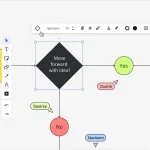Let’s be honest. Most companies are talking about diversity and inclusion. They’re checking boxes for gender, race, and ethnicity. But there’s a massive, often overlooked pool of talent that remains largely untapped: neurodivergent individuals. And when we specifically consider neurodiversity inclusion in workplace leadership, well, that’s where the real magic—and the real competitive advantage—happens.
Think of it like this. If your entire leadership team thinks in the same linear, neurotypical way, you’re essentially trying to navigate a complex, multi-lane highway using only a single, straight road map. You’ll miss the exits, the scenic routes, and the clever shortcuts. Neurodiversity is about adding new, crucial maps to your navigational arsenal.
What Exactly Are We Talking About? Neurodiversity Defined
Neurodiversity is the simple idea that brains aren’t one-size-fits-all. It’s a biological fact. It reframes conditions like autism, ADHD, dyslexia, and others not as disorders to be cured, but as natural variations in human cognition. A neurodivergent person simply has a brain that works differently from the average, or “neurotypical,” person.
And these differences? They’re not deficits. They’re often superpowers in disguise. The challenge isn’t the neurodivergence itself; it’s the world—and the workplace—that’s built for a single type of brain.
The Untapped Potential in the Corner Office
So, why should you care about neurodiversity in leadership roles specifically? Because the problems we’re facing today demand unconventional solutions. Here’s the deal:
- Innovation on Overdrive: An autistic leader might perceive patterns and systemic risks others miss, leading to groundbreaking product ideas or risk mitigation strategies. Their deep, hyper-focused interests can translate into unparalleled expertise.
- Hyper-Focus and Resilience: An executive with ADHD can often exhibit incredible bursts of creativity and problem-solving under pressure, thriving in chaotic environments that would overwhelm others. They’re the ones who can pivot on a dime.
- Complex Problem Solving: A dyslexic leader, having spent a lifetime developing compensatory strategies, often excels at big-picture, spatial, and narrative reasoning—seeing the story behind the data that pure number-crunchers might ignore.
Honestly, in a world of AI and automation, these uniquely human cognitive strengths are becoming the most valuable currency.
Busting the Barriers: From Awareness to Action
Sure, the intent might be there, but traditional corporate structures are often a minefield for neurodivergent individuals. The path to leadership is paved with social rituals and unspoken rules that can be exhausting to navigate. Let’s dive into the main hurdles.
The Interview Gauntlet
Standard interviews assess charisma and quick-thinking, not necessarily deep capability. “Where do you see yourself in five years?” is a nightmare question for someone who thinks in concrete, project-based terms. It rewards smooth talkers over deep thinkers.
The “Culture Fit” Trap
This is a big one. “Culture fit” is often a polite way of saying “someone who acts and socializes like us.” It’s a homogeneity trap. What you really want is “culture add“—someone who brings a new perspective that actually challenges and improves your existing culture.
Rigid Work Environments
Open-plan offices with fluorescent lighting and constant noise? For many neurodivergent people, that’s like trying to do calculus in the middle of a rock concert. Traditional 9-to-5 rigidity and an over-reliance on vague, abstract instructions can also be major blockers.
A Practical Blueprint for Inclusive Leadership
Okay, so how do we move from just talking about it to actually doing it? It requires intentional, structural change. Here are some actionable strategies.
| Area | Traditional Approach | Neurodiversity-Informed Approach |
| Recruitment | Unstructured interviews, focus on “polish.” | Skills-based tasks, work sample tests, clear questions provided in advance. |
| Communication | Verbal instructions, implied expectations. | Written, clear agendas for meetings. Direct, unambiguous feedback. |
| Workspace | Mandatory open-plan seating. | Quiet zones, noise-canceling headphones, flexible & remote work options. |
| Performance | Measuring hours at a desk. | Measuring output and results. Flexible schedules based on energy peaks. |
1. Rethink the Entire Hiring Process
Ditch the tricky brain-teasers and the vague questions. Instead, give candidates a real-world problem your team is facing and ask them to present a solution. This assesses actual job-related skills, not just their ability to interview well.
2. Foster Psychological Safety
This is non-negotiable. Create an environment where people can disclose their neurotype without fear of stigma or missed promotion. Leaders must model this vulnerability and make it clear that asking for accommodations—like written instructions or a different meeting format—is a sign of professionalism, not weakness.
3. Provide Mentorship and Clear Pathways
Neurodivergent employees often get stuck in individual contributor roles. Establish formal mentorship programs that pair them with senior leaders who can help them navigate the unspoken political landscape of the organization and advocate for their advancement.
The Ripple Effect: Beyond the Bottom Line
When you commit to neurodiversity in leadership, the benefits cascade outward. It sends a powerful message to your entire workforce: “We value you for your unique mind, not your ability to conform.” This boosts morale and loyalty across the board.
Furthermore, a leadership team that reflects the true diversity of human thought is simply better equipped to understand and serve a diverse customer base. They can spot market gaps and design products with an empathy that homogenous teams can only dream of.
In fact, companies like Microsoft, SAP, and JPMorgan Chase have already launched neurodiversity hiring initiatives and are seeing stunning results—including boosts in productivity, innovation, and quality control.
A Final Thought: It’s Not a Charity, It’s a Strategy
Including neurodivergent leaders isn’t about being nice. It’s not a corporate social responsibility project. It’s a strategic imperative for any organization that wants to survive and thrive in the 21st century. You’re not doing them a favor by creating space; you’re doing your company a favor by unlocking a reservoir of potential.
The question is no longer if you should embrace neurodiversity in your leadership ranks, but how quickly you can afford not to. The most successful organizations of the future won’t just accommodate different kinds of thinkers—they will be built by them.


 Sustainable Business Models for Circular Economies: It’s Not Just Recycling, It’s Rethinking Everything
Sustainable Business Models for Circular Economies: It’s Not Just Recycling, It’s Rethinking Everything  Voice Search Optimization for Service-Based Businesses: Finding Your Voice in a Hands-Free World
Voice Search Optimization for Service-Based Businesses: Finding Your Voice in a Hands-Free World  Tax Optimization Strategies for Digital Nomads: Keep More of Your Hard-Earned Money
Tax Optimization Strategies for Digital Nomads: Keep More of Your Hard-Earned Money  Financial Management for Creator Economy Professionals: Beyond the Next Paycheck
Financial Management for Creator Economy Professionals: Beyond the Next Paycheck  Trade Show Logistics for International Exhibitors: Your Blueprint for a Seamless Show
Trade Show Logistics for International Exhibitors: Your Blueprint for a Seamless Show  Neurodiversity Inclusion in Workplace Leadership: Why It’s Your Next Competitive Edge
Neurodiversity Inclusion in Workplace Leadership: Why It’s Your Next Competitive Edge  Regenerative Leadership: The Unbeatable Engine for Organizational Resilience
Regenerative Leadership: The Unbeatable Engine for Organizational Resilience  Marketing Automation for Creator-Led Brands: Reclaim Your Time and Scale Your Passion
Marketing Automation for Creator-Led Brands: Reclaim Your Time and Scale Your Passion 

